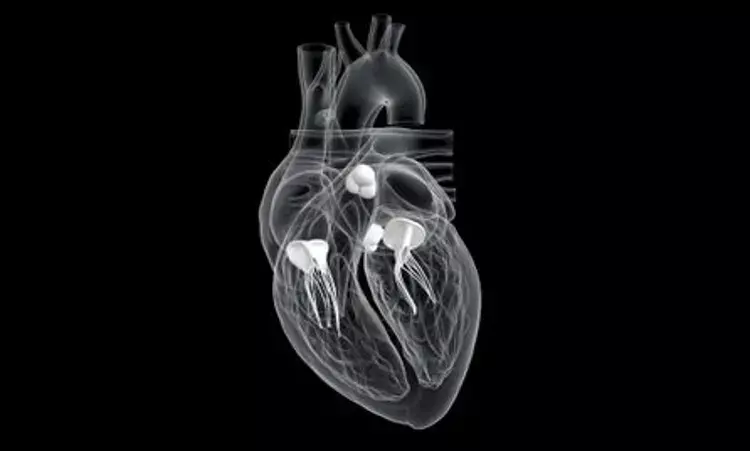- Home
- Medical news & Guidelines
- Anesthesiology
- Cardiology and CTVS
- Critical Care
- Dentistry
- Dermatology
- Diabetes and Endocrinology
- ENT
- Gastroenterology
- Medicine
- Nephrology
- Neurology
- Obstretics-Gynaecology
- Oncology
- Ophthalmology
- Orthopaedics
- Pediatrics-Neonatology
- Psychiatry
- Pulmonology
- Radiology
- Surgery
- Urology
- Laboratory Medicine
- Diet
- Nursing
- Paramedical
- Physiotherapy
- Health news
- Fact Check
- Bone Health Fact Check
- Brain Health Fact Check
- Cancer Related Fact Check
- Child Care Fact Check
- Dental and oral health fact check
- Diabetes and metabolic health fact check
- Diet and Nutrition Fact Check
- Eye and ENT Care Fact Check
- Fitness fact check
- Gut health fact check
- Heart health fact check
- Kidney health fact check
- Medical education fact check
- Men's health fact check
- Respiratory fact check
- Skin and hair care fact check
- Vaccine and Immunization fact check
- Women's health fact check
- AYUSH
- State News
- Andaman and Nicobar Islands
- Andhra Pradesh
- Arunachal Pradesh
- Assam
- Bihar
- Chandigarh
- Chattisgarh
- Dadra and Nagar Haveli
- Daman and Diu
- Delhi
- Goa
- Gujarat
- Haryana
- Himachal Pradesh
- Jammu & Kashmir
- Jharkhand
- Karnataka
- Kerala
- Ladakh
- Lakshadweep
- Madhya Pradesh
- Maharashtra
- Manipur
- Meghalaya
- Mizoram
- Nagaland
- Odisha
- Puducherry
- Punjab
- Rajasthan
- Sikkim
- Tamil Nadu
- Telangana
- Tripura
- Uttar Pradesh
- Uttrakhand
- West Bengal
- Medical Education
- Industry
Transcatheter aortic valve replacement for severe aortic stenosis reduced 5 years mortality: JAMA

One-third of people with severe aortic stenosis and left ventricular ejection fraction (LVEF) less than 50% had improvement in their LVEF one month following transcatheter aortic valve replacement (TAVR), says an article published in the Journal of American Medical Association.
Early LVEF improvement following transcatheter aortic valve replacement is related with decreased 1-year mortality in patients with severe aortic stenosis and left ventricular ejection fraction less than 50%; however, its connection with long-term clinical outcomes is unknown. In order to investigate the relationship between early LVEF improvement following TAVR and 5-year outcomes, Dhaval Kolte and colleagues undertook this study.
Patients who participated in the Installation of Aortic Transcatheter Valves (PARTNER) 1, 2, and S3 trials and registries between July 2007 and April 2015 were examined in this cohort analysis. The present analysis comprised patients who received transfemoral TAVR who were high- and intermediate-risk and had a baseline LVEF less than 50%. The data was examined between August 2020 and May 2021. Early LVEF improvement was characterized as a continuous variable and as an increase of 10 percentage points or more at 30 days. The primary outcome at 5 years was defined to be death from any cause.
The key findings of this study were :
1. 468 (71.0%) of the 659 patients with LVEF less than 50% who were included in the study were men, and their mean (SD) age was 82.4 (7.7) years.
2. In 216 individuals, LVEF improved after transfemoral TAVR within 30 days (32.8%).
3. Lower chance of LVEF improvement was independently linked with prior myocardial infarction, diabetes, malignancy, greater baseline LVEF, larger left ventricular end-diastolic diameter, and larger aortic valve area. Patients who saw early LVEF improvement with TAVR had decreased 5-year rates of cardiac and all-cause deaths.
4. Early LVEF improvement was linked to decreased 5-year all-cause death and cardiac death following TAVR in multivariable models.
5. A visual inflection point in all-cause mortality was seen at an LVEF of 10%, according to restricted cubic spline analysis, after which there was a sharp fall.
6. Rehospitalization, New York Heart Association functional class, and the Kansas City Cardiomyopathy Questionnaire did not vary in a statistically significant way.
7. Patients with early LVEF improvement compared to those without at 5 years.
8. In subgroup analysis, the relationship between early LVEF improvement and 5-year all-cause mortality persisted whether coronary artery disease or a recent myocardial infarction was present or not.
In conclusion, lower 5-year all-cause death and cardiac death were related with early LVEF improvement with TAVR. To fully comprehend the pathophysiologic mechanism(s) driving lower mortality in individuals with early LVEF recovery following TAVR, more research is required.
Reference:
Kolte, D., Bhardwaj, B., Lu, M., Alu, M. C., Passeri, J. J., Inglessis, I., Vlahakes, G. J., Garcia, S., Cohen, D. J., Lindman, B. R., Kodali, S., Thourani, V. H., Leon, M. B., … Elmariah, S. (2022). Association Between Early Left Ventricular Ejection Fraction Improvement After Transcatheter Aortic Valve Replacement and 5-Year Clinical Outcomes. In JAMA Cardiology. https://doi.org/10.1001/jamacardio.2022.2222
Neuroscience Masters graduate
Jacinthlyn Sylvia, a Neuroscience Master's graduate from Chennai has worked extensively in deciphering the neurobiology of cognition and motor control in aging. She also has spread-out exposure to Neurosurgery from her Bachelor’s. She is currently involved in active Neuro-Oncology research. She is an upcoming neuroscientist with a fiery passion for writing. Her news cover at Medical Dialogues feature recent discoveries and updates from the healthcare and biomedical research fields. She can be reached at editorial@medicaldialogues.in
Dr Kamal Kant Kohli-MBBS, DTCD- a chest specialist with more than 30 years of practice and a flair for writing clinical articles, Dr Kamal Kant Kohli joined Medical Dialogues as a Chief Editor of Medical News. Besides writing articles, as an editor, he proofreads and verifies all the medical content published on Medical Dialogues including those coming from journals, studies,medical conferences,guidelines etc. Email: drkohli@medicaldialogues.in. Contact no. 011-43720751


